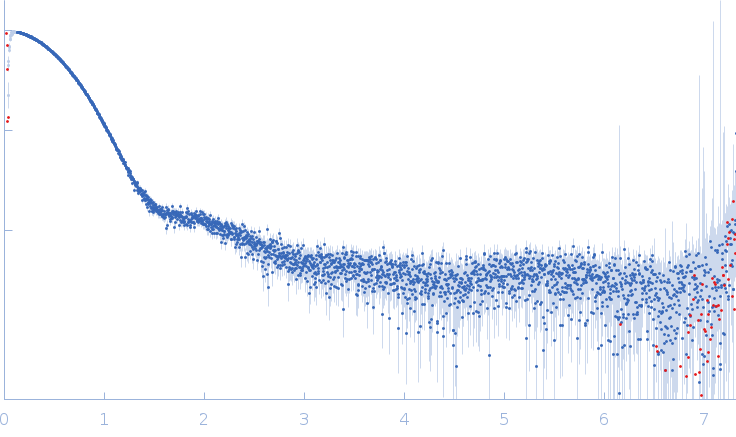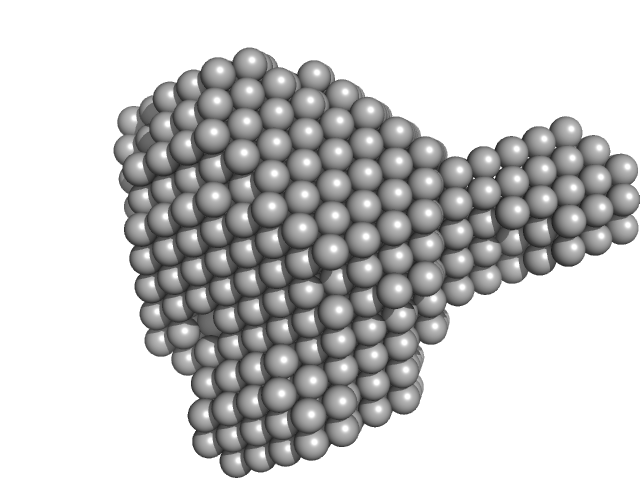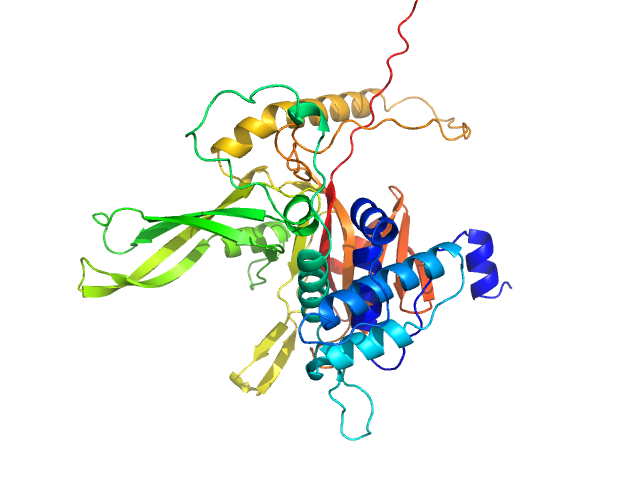| MWexperimental | 47 | kDa |
| MWexpected | 46 | kDa |
| VPorod | 88 | nm3 |
|
log I(s)
9.47×103
9.47×102
9.47×101
9.47×100
|
 s, nm-1
s, nm-1
|
|
|
|

|
|

|
|
Synchrotron SAXS data from solutions of the catalytic domain of ubiquitin-specific protease 14 (USP14) in 20 mM HEPES, 150 mM NaCl, 2 mM TCEP, pH 7.5 were collected on the EMBL P12 beam line at PETRA III (DESY, Hamburg, Germany) using a Pilatus 6M detector at a sample-detector distance of 3 m and at a wavelength of λ = 0.124 nm (I(s) vs s, where s = 4πsinθ/λ, and 2θ is the scattering angle). In-line size-exclusion chromatography (SEC) SAS was employed. The SEC parameters were as follows: A 75.00 μl sample at 16 mg/ml was injected at a 0.60 ml/min flow rate onto a GE Superdex 75 Increase 10/300 column at 20°C. 2100 successive 1 second frames were collected. The data were normalized to the intensity of the transmitted beam and radially averaged; the scattering of the solvent-blank was subtracted.
|
|
|||||||||||||||||||||||||||||||||